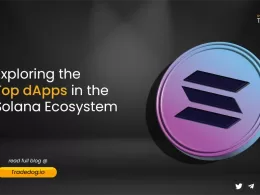In the dynamic realm of cryptocurrency, few events captivate the attention of the global financial landscape like the phenomenon of Bitcoin halving. As we stand on the cusp of 2024, Bitcoin is ready for its 4th ever halving, impacting its supply dynamics and consequently influencing its value.
This is estimated to occur around Apr 17th, 2024. This would be exactly 4 years or 210,000 blocks after the previous halving that took place on May 11th, 2020. However, it is not possible to be exact because halvings take place on a schedule not determined by dates, but by “block height.” Block height refers to a specific location in a blockchain which is measured by the number of blocks that come before it.
Halvings take place at set intervals of 210,000 blocks, which historically have been reached roughly every 4 years. After the upcoming halving (when the BTC block height reaches 840,000), the block reward paid to bitcoin miners for their work validating transaction blocks will be decreased from its current 6.25 BTC to 3.175 BTC. In the early days of Bitcoin, the block reward was 50 BTC, which dropped to 25 after the first halving, 12.5 after the second and 6.25 after the third, where it stands today.
What the past halving data suggests?
Bitcoin has undergone three halving events in its evolutionary journey—first in 2012, followed by another in 2016, and the most recent one in 2020. Throughout this timeline, Bitcoin has witnessed substantial transformations, paralleling the shifting landscape of mainstream acceptance for cryptocurrencies on a global scale.
Halving 1:
| Date | Nov 28, 2012 |
| BTC price at the time of Halving 1 | $12.28 |
| Highest price during bull cycle | $1,163 (Nov, 2013) |
| Price change to ATH levels | ~9400% |
| BTC rewards reduced per block | 50 BTC to 25 BTC |
| Time taken to reach ATH levels | 12 months |
During the first ever halving, Bitcoin was in its infancy stage, no one was taking this asset class seriously except the Cypherpunks. When the price in dollars ballooned from double digits to over $1,000, however, Bitcoin did begin making some headlines. But for the most part, the burgeoning asset class wasn’t taken seriously by anyone outside the community.
Halving 2:
| Date | Jul 9, 2016 |
| BTC price at the time of Halving 1 | $640 |
| Highest price during bull cycle | $19,666 (Dec, 2017) |
| Price change to ATH levels | ~3000% |
| BTC rewards reduced per block | 25 BTC to 12.5 BTC |
| Time taken to reach ATH levels | 18 months |
During the second halving, Bitcoin and the broader crypto sphere surged into prominence, accompanied by a deluge of media scrutiny directed at the asset class. This period marked the onset of the altcoin and ICO boom, an era marred by numerous unfortunate scams and the demise of several crypto startups.
Halving 3:
| Date | May 11, 2020 |
| BTC price at the time of Halving 1 | $8,600.00 |
| Highest price during bull cycle | $69,000(Nov, 2021) |
| Price change to ATH levels | ~700% |
| BTC rewards reduced per block | 12.5 BTC to 6.2 5BTC |
| Time taken to reach ATH levels | 18 months |
The third halving, which unfolded amidst the backdrop of the COVID-19 pandemic in 2020, marked a distinctive chapter in Bitcoin’s narrative. Despite the global economic standstill, the price trajectory for BTC/USD adhered closely to the established patterns of previous halving cycles.
This epoch also witnessed a noteworthy development as Institutional Investors, from Michael Saylor’s Microstrategy to Elon Musk’s Tesla disclosed their allocations to Bitcoin, signifying the onset of the first significant rally fueled by institutional investors pouring substantial capital into the cryptocurrency.
Across these cycles, a consistent pattern emerged in the impact of halving on Bitcoin prices: a substantial surge leading up to the halving, succeeded by a brief correction and consolidation phase. Subsequently, each cycle culminated in a major bull run and a pinnacle, approximately 18 months post-halving. This time, the added impetus from institutional investors played a pivotal role in shaping the nuanced dynamics of Bitcoin’s market movements.
Conclusion
Anticipation is high for another bull run post next year’s halving, although outcomes are uncertain. The uniqueness of the 2024 Bitcoin halving lies in its alignment with the potential approval of a spot Bitcoin ETF in the U.S. The impact of interest rates is a variable, historically favoring Bitcoin in lower-rate environments, with 2023 demonstrating resilience even in higher-rate periods. Market observers suggest the Fed might shift to rate cuts in 2024.
The predictability of the halving, known to all market participants in advance, raises the possibility that its impact is already factored into the current Bitcoin price. Consequently, after each halving, the reduction in BTC supply becomes less significant over time. In our view, as crypto markets become more efficient, changes in demand, rather than supply, increasingly steer Bitcoin’s price dynamics.









